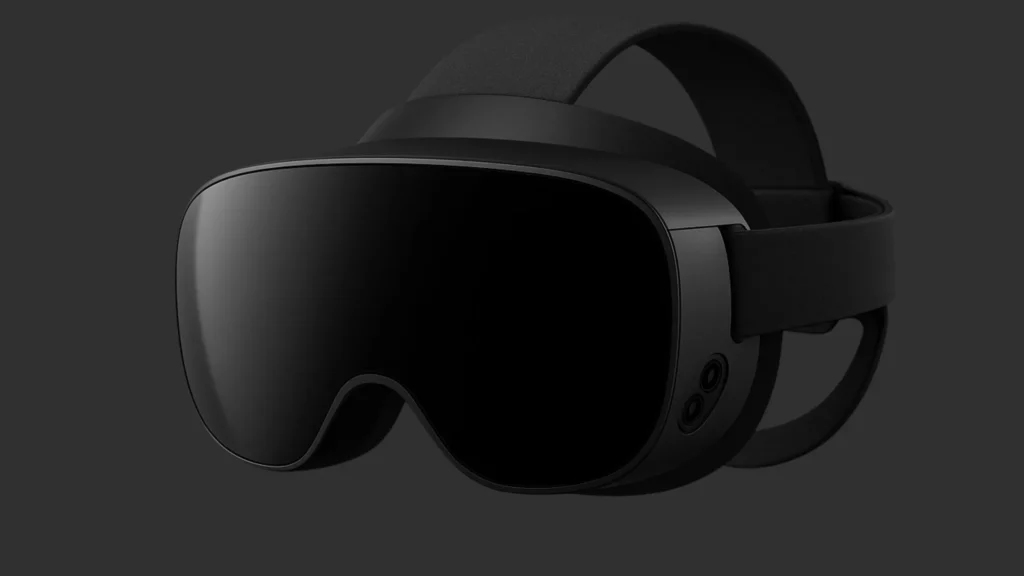Meta Reveals Ultra-Wide FOV VR & MR Headset Prototypes Ahead of SIGGRAPH 2025
Ahead of the ACM SIGGRAPH 2025 Emerging Technologies Conference, researchers from Meta’s Reality Labs Research have unveiled breakthrough developments in virtual and mixed reality headset design. The team shared details of two experimental headsets that push the boundaries of immersive technology, offering an ultra-wide 180-degree horizontal field-of-view (FOV)—a dramatic leap beyond current consumer devices like the Meta Quest 3, which provides around 100 degrees.
Compact Design Meets Ultra-Wide FOV
What makes this research especially compelling is the form factor. Unlike other wide-FOV headsets on the market, such as those from Pimax—which often trade compactness for extended view—Meta’s prototypes aim to maintain a goggles-style, compact form, making them more viable for everyday use.
🕶️ Prototype #1: VR Headset
The first device is a dedicated VR headset. It utilizes high-curvature reflective polarizers, a novel optical design that enables the ultra-wide field-of-view while preserving a slim, lightweight profile.
🥽 Prototype #2: MR Headset
The second prototype is a mixed reality (MR) headset, built on the same optical platform and head-mount. However, it incorporates four high-resolution passthrough cameras—totaling 80 megapixels at 60 FPS—to offer a passthrough FOV that matches the immersive FOV of the display. This makes real-world interactions more natural and seamless. For instance, in a test scenario, users could effortlessly perceive both a nearby person and objects in their peripheral view—something not possible with existing MR headsets like the Quest 3.
Field-of-View Comparison with Quest 3
The researchers benchmarked their experimental headsets against the Meta Quest 3. In mixed reality usage, the benefits were obvious: a user could see someone sitting beside them or even spot a snack on their lap—all without turning their head. This level of spatial awareness and immersion represents a significant usability upgrade.
Tracking System: A Nod to the Past
Interestingly, both prototypes appear to employ a tracking system similar to the outside-in ‘Constellation’ system used in the original Oculus Rift CV1. Reality Labs has frequently revisited this approach in R&D contexts, likely due to its effectiveness and ease of integration for rapid iteration compared to more complex inside-out tracking systems.
Balancing Innovation and Tradeoffs
It’s worth noting that wide FOV headsets already exist in the market—but often at the cost of bulkiness, high weight, or limited battery life. What sets Meta’s prototypes apart is their promise of consumer-friendly form factors without sacrificing immersive experience.
Still, as Meta’s track record shows, not all prototypes make it to production. Back in 2018, the company (then Facebook) showcased a prototype with varifocal displays—technology that still hasn’t made its way into any commercial headset. The same caution applies here.
A Glimpse Into the Future?
Although Meta CTO Andrew “Boz” Bosworth has previously expressed skepticism about pursuing ultra-wide FOVs in consumer headsets—citing tradeoffs in cost, weight, and battery life—the capabilities demonstrated by these latest prototypes may influence future decisions.
As the researchers put it:
“Together, our prototype headsets establish a new state-of-the-art in immersive virtual and mixed reality experiences, pointing to the user benefits of wider FOVs for entertainment and telepresence applications.”
Only time will tell whether this research translates into a future Quest headset—but it’s clear that Meta continues to push the frontiers of immersive tech with each prototype unveiled.



